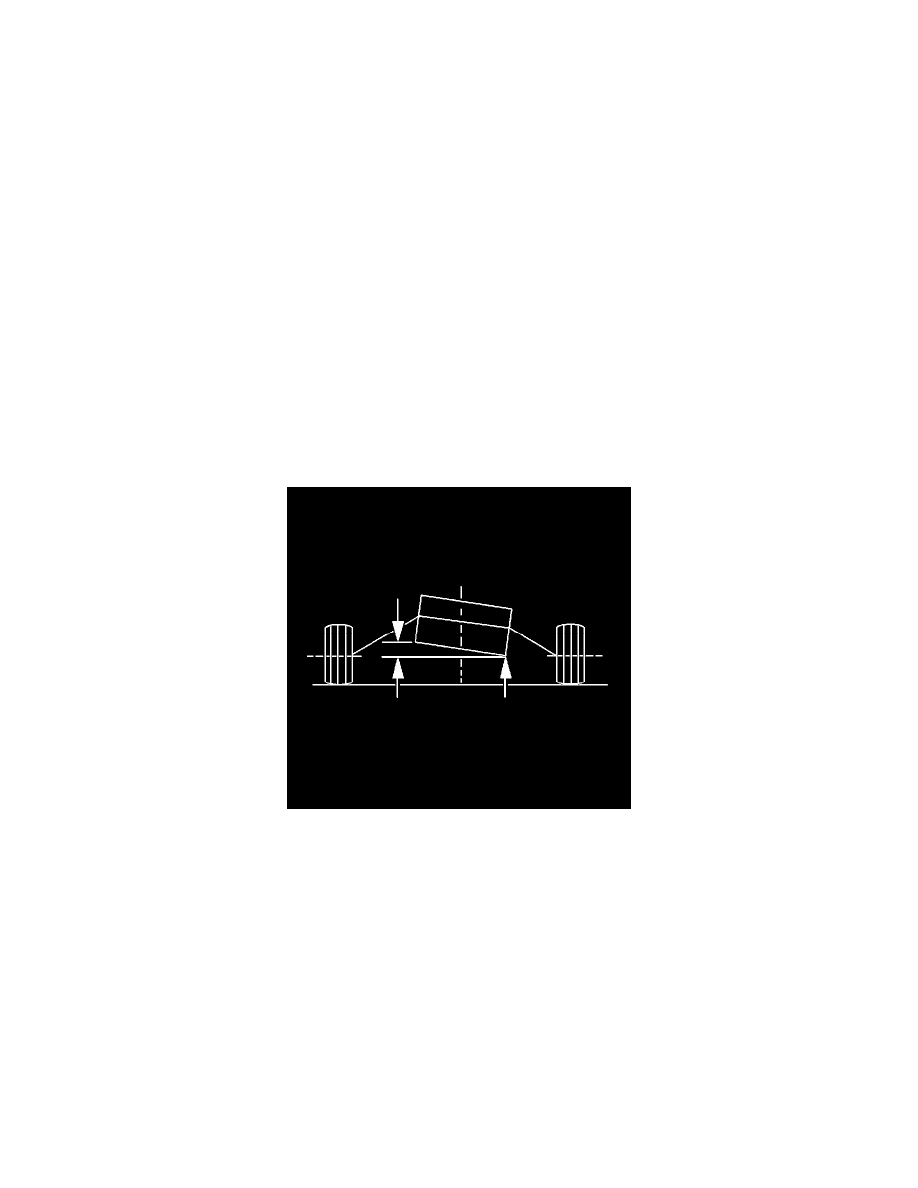Malibu L4-2.4L Hybrid (2008)

If the vehicle is out in the Positive (+) direction-moving the RHS forward and/or LHS rearward will move the thrust angle towards zero degrees.
If the vehicle is out in the Negative (-) direction-moving the RHS rearward and/or LHS forward will move the thrust angle towards zero degrees.
Lead/Pull Description
Lead/Pull Description
At a constant highway speed on a typical straight road, lead/pull is the amount of effort required at the steering wheel to maintain the vehicle's straight
path.
Important: Vehicles will tend to lead/pull in the direction of the road slope as part of normal operation.
Lead/pull is usually caused by the following factors:
*
Road slope
*
Variability in tire construction
*
Wheel alignment (front cross caster and camber)
*
Unbalanced steering gear
*
Electronic Power Steering (EPS) steering position and torque sensors not calibrated correctly, if equipped.
Torque Steer Description
Torque Steer Description
A vehicle pulls or leads in one direction during hard acceleration. A vehicle pulls or leads in the other direction during deceleration.
The following factors may cause torque steer to be more apparent on a particular vehicle:
*
A slightly smaller diameter tire on the right front increases a right torque lead. Inspect the front tires for differences in the brand, the construction,
or the size. If the tires appear to be similar, change the front tires from side-to-side and retest the vehicle. Tire and wheel assemblies have the most
significant effect on torque steer correction.
*
A large difference in the right and left front tire pressure
*
Left-to-right differences in the front view axle angle may cause significant steering pull in a vehicle. The pull will be to the side with the most
downward sloping axle from the differential to the wheels. Axles typically slope downward from the differential. The slope of the transaxle pan to
level ground may be used as an indication of bias axle angles. The side with the higher transaxle pan (shown on the left side of the illustration) has
the most downward sloping axle angle.
Memory Steer Description
Memory Steer Description
Memory steer is when the vehicle wants to lead or pull in the direction the driver previously turned the vehicle. Additionally, after turning in the opposite
